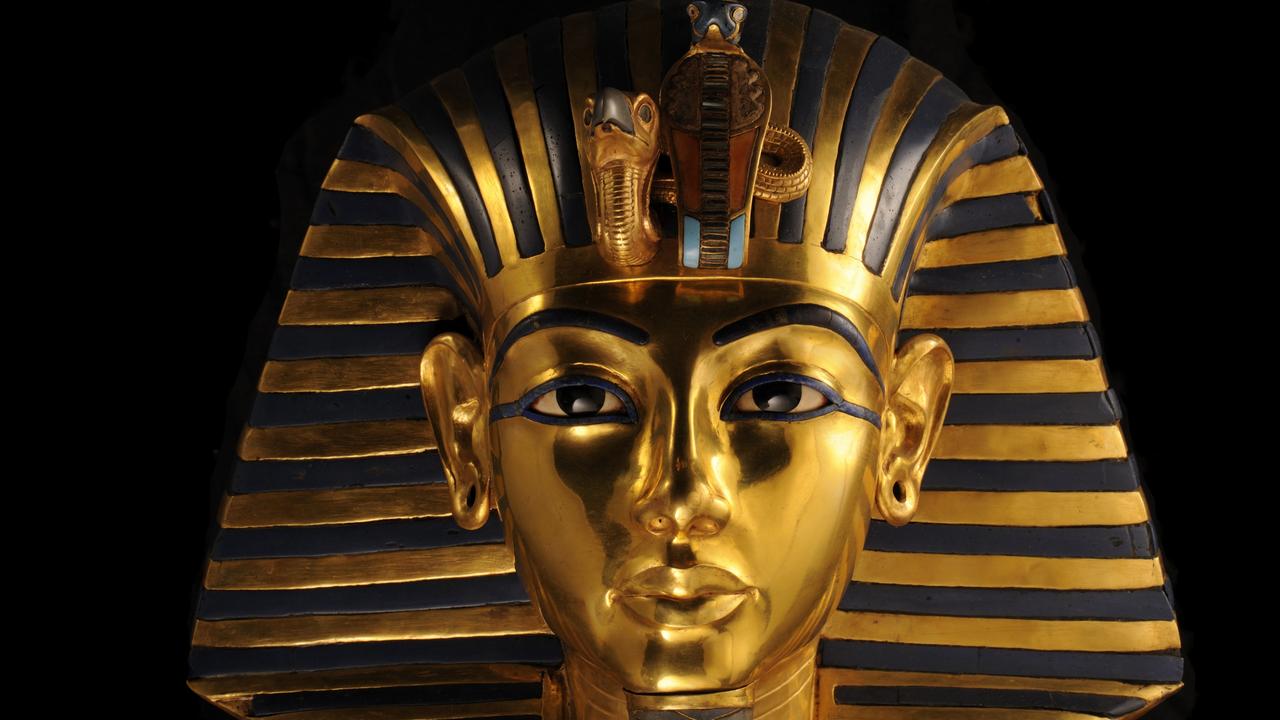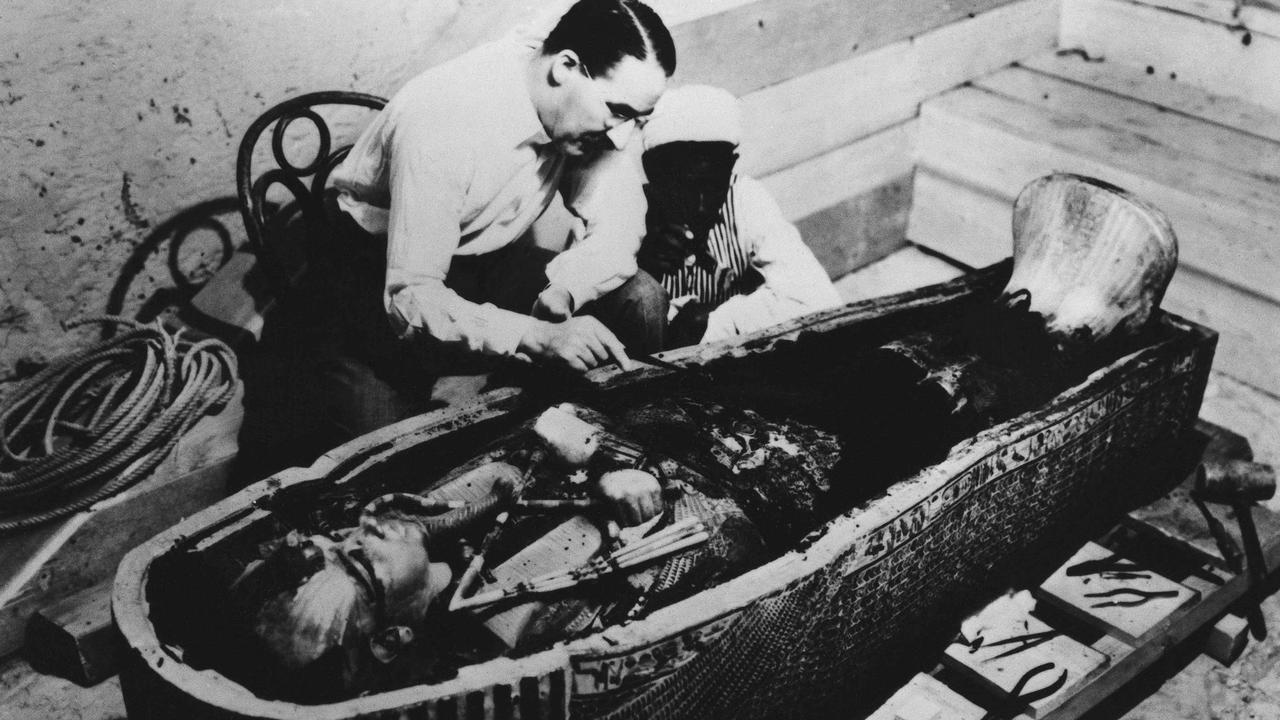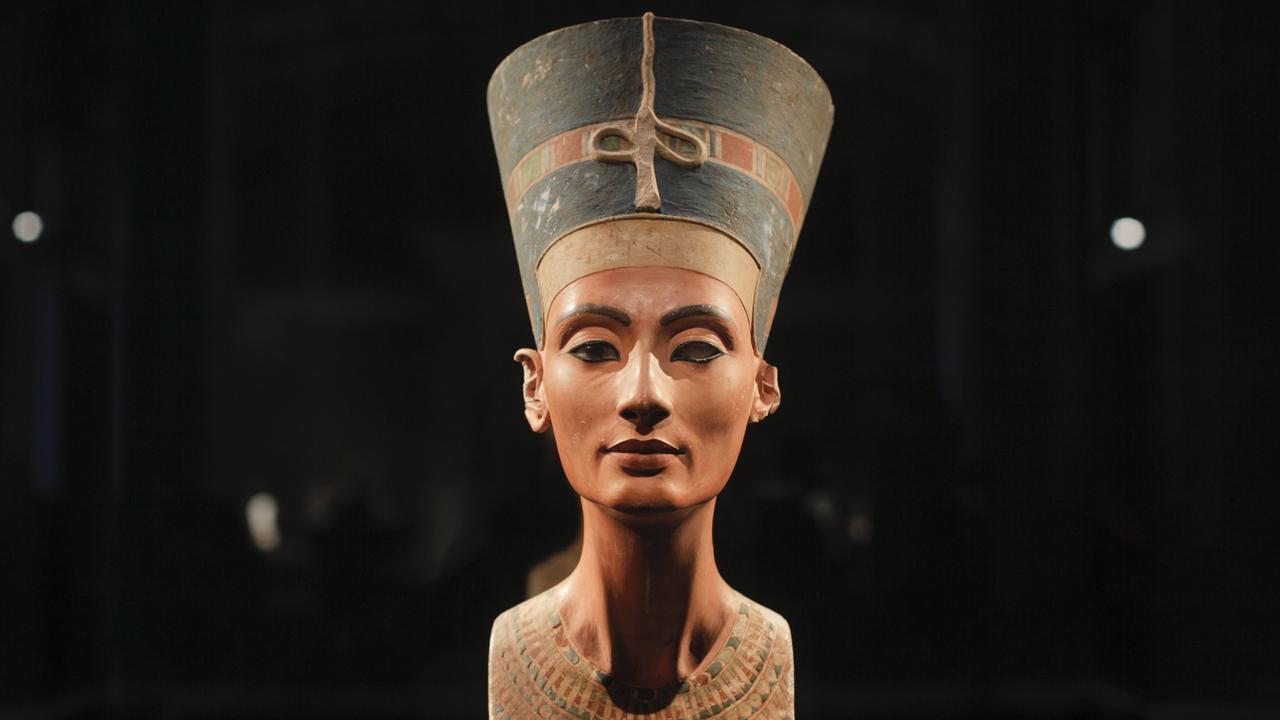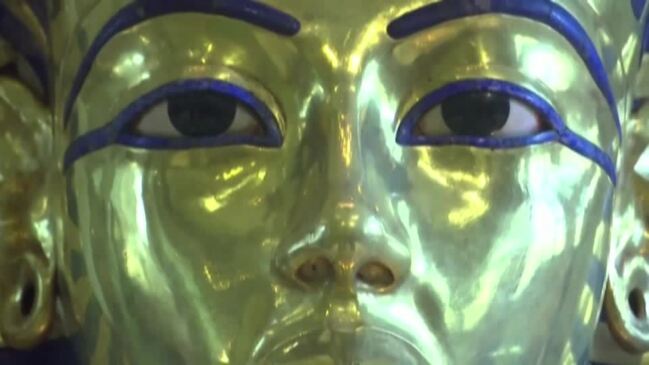New evidence sparks mystery around King Tut’s death mask
Tutankhamun has long been one of Egypt’s most famous pharaohs following the discovery of his iconic gold death mask, but experts say he may have been ‘cast off’ and given his stepmother’s tomb

READING LEVEL: ORANGE
Archaeologists are questioning whether Pharaoh* Tutankhamun was a “cast-off king” after finding evidence that his golden death mask* may have been made for someone else.
The tomb of Egyptian boy-king Tutankhamun has been considered a valuable window into the customs of Ancient Egypt since it was discovered by archaeologist Howard Carter in 1922.
At the time, Carter was stunned to find a wealth of shimmering golden treasures in the tomb, which hadn’t been heavily plundered by tomb raiders as many other ancient Egyptian sites had.
One of Carter’s most famous discoveries was Tutankhamun’s golden death mask, which was 53.5cm tall and made from 10kg of solid gold inlaid with obsidian* and quartz. Its pristine sheen, intricate detail and lifelike features have fascinated millions of tourists ever since – and its image has become an icon of Ancient Egypt.

But now, more than 100 years later, several archaeologists have concluded that the mask may have been a hand-me-down and not originally intended for Tutankhamun himself.
Archaeologists have been scratching their heads about several details of the mask and many precious objects buried in the boy-king’s tomb that just don’t match up.
To begin with, the design of the tomb was usually reserved for queens, not kings.
Curiously, some of the statues of Tutankhamun have breasts – and many items carry the name of his heretic* stepmother, Nefertiti.
Such strange differences in what would normally be a very strict and traditional funerary process* prompted University of York researchers to reassess what had been accepted as the final resting place of Tutankhamun.

Professor Joann Fletcher of Britain’s University of York said there were signs that Tutankhamun’s death mask was a hand-me-down that had been altered to fit him.
“This mask was not made for an adult male pharaoh,” Prof Fletcher concluded when examining the mask.
“When the gold was compared, the face is made of completely different gold to the rest,” Prof Fletcher said.
“(And) evidence of soldering* is clearly visible on the mask.
“It now seems as if Tutankhamun’s own face was effectively grafted* onto the mask of the previous ruler … It may well have been (Queen) Nefertiti.”


But she said the earring holes were a dead giveaway, with Ancient Egyptian cultural customs suggesting that earrings would have been inappropriate for an adult male king.
While King Tut was only nine when he took the throne, it is estimated that he died at the age of 19.
“I was sure the death mask was not specifically designed for King Tut,” said Prof Fletcher.
British Egyptologist Dr Nicholas Reeves made similar claims in 2015, after finding Tutankhamun’s cartouche* stamped on the inside of the mask. Dr Reeves reported the cartouche appeared to be stamped on top of an older cartouche, with alignments matching Nefertiti’s name.

THE MYSTERY OF THE MASK
It was a tumultuous time when King Tut took the throne as a nine-year-old child.
His father, Akhenaten, who had established a new cult of the sun-god, had died. The heretic pharaoh’s religion was overthrown by priests of the traditional gods based in Thebes.
His youth and the cultural upheaval surrounding a change in state religions may have thrown his burial preparations into disarray after he unexpectedly died in 1323BC. But there are also suggestions his successor, Pharaoh Aye, may have stolen a royal tomb intended for the boy-king for himself.
Speculation has surged in recent years that Tut was moved into the tomb of his stepmother, Queen Nefertiti.
Nefertiti’s story has remained a mystery.

Her husband had broken with tradition by appointing her co-ruler. And she had played a central role in promoting the worship of the Aten* in the controversial new cult introduced by Akhenaten.
Arguably the most likely scenario was that Egypt’s priests and funerary officials were forced to rush Tut’s burial.
At best, the mask was made for the boy-king while he was still an earring-wearing child.
At worst, the switch could have been part of a desire to destroy Akhenaten and Nefertiti’s legacy*.
The sun would set on the worship of the Aten with the closure of the boy-king’s tomb, burying a part of Egypt’s history that priests of the traditional gods and the following rulers wished to keep hidden as time went by.
WATCH THE VIDEO

POLL
GLOSSARY
- Pharaoh: the rulers of ancient Egypt, pharaohs were both kings and religious leaders of the people
- death mask: a mask placed on the body of the deceased person as part of the ancient Egyptian funerary process, which also included mummification of the body. The mask was made to guide the spirit of the deceased back to its final resting place in the body.
- obsidian: a natural, volcanic glass
- heretic: someone holding an opinion that is at odds to what is generally accepted, especially in the case of religion
- funerary process: the elaborate set of rituals and processes involved in preparing the body of someone who had died for burial as part of ancient Egyptian custom, including mummification, the casting of spells and several rituals
- soldering: a processing of joining two metal surfaces together by heating the metal
- grafted: attached
- cartouche: an oval-like hieroglyph that represents the name of a ruler
- Aten: a sun-god, depicted as a disk with rays of light stretching out ending in human hands. The Pharaoh Akhenaten introduced the worship of Aten as being the only god to worship in a land where there had long been many gods revered. It was a controversial move that was changed back when Akhenaten died and his son Tutankhamun took the throne
- legacy: the long-lasting impact of someone’s actions
EXTRA READING
Inside tragic final months of King Tut’s life
Surprise Ancient Egypt cancer find
Has Cleopatra’s tomb been found?
QUICK QUIZ
1. When did Howard Carter discover Tutankhamun’s tomb?
2. What are two pieces of evidence that Prof Fletcher gives to substantiate her claim that King Tut’s death mask was not originally made for him?
3. How old was Tutankhamun when he took to the throne?
4. What controversial change were Tut’s parents, Akhenaten and Nefertiti, known for introducing when they were in power?
5. At what age is Tutankhamun believed to have died?
LISTEN TO THIS STORY
CLASSROOM ACTIVITIES
1. How did King Tut die?
Do you know what archaeologists think caused Tutankhamun’s early death? Use your research skills to find out how his possible cause of death was discovered. Use the information that you have found to write a paragraph explaining the methods that the archaeologists used to solve this mystery.
Time: allow at least 45 minutes to complete this activity
Curriculum Links: English, History
2. Extension
How long do you think it usually took for the tomb for an Ancient Egyptian pharaoh to be prepared? Use clues that you can find in the story and your own ideas to write your answer.
Time: allow at least 20 minutes to complete this activity
Curriculum Links: English, History
VCOP ACTIVITY
Wow word recycle
There are plenty of wow words (ambitious pieces of vocabulary) being used in the article. Some are in the glossary, but there might be extra ones from the article that you think are exceptional as well.
Identify all the words in the article that you think are not common words, and particularly good choices for the writer to have chosen.
Select three words you have highlighted to recycle into your own sentences.
If any of the words you identified are not in the glossary, write up your own glossary for them.
Extension
Find a bland sentence from the article to up-level. Can you add more detail and description? Can you replace any base words with more specific synonyms?
Down-level for a younger audience. Find a sentence in the article that is high level. Now rewrite it for a younger audience so they can understand the words without using the glossary.


